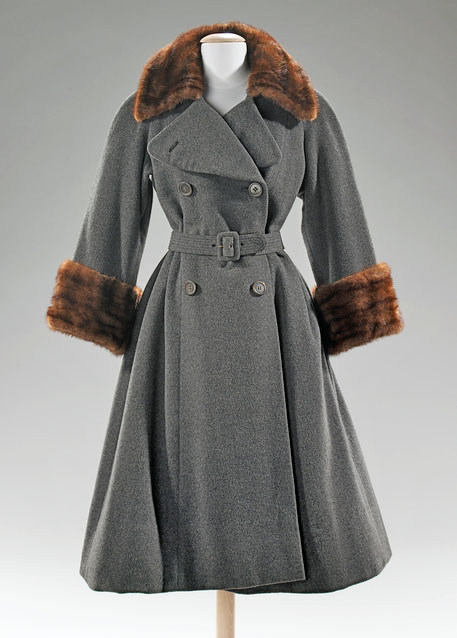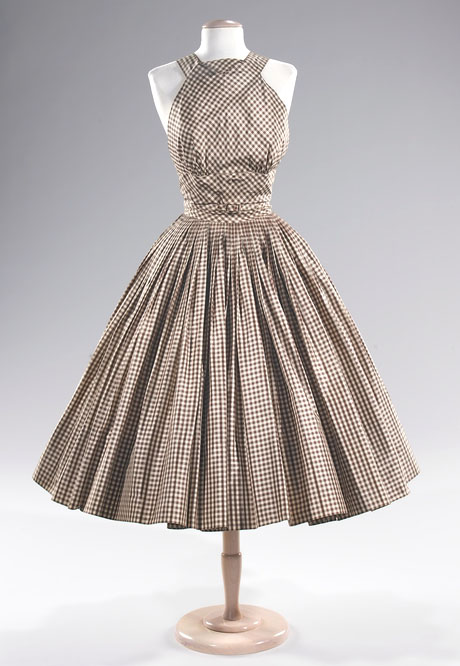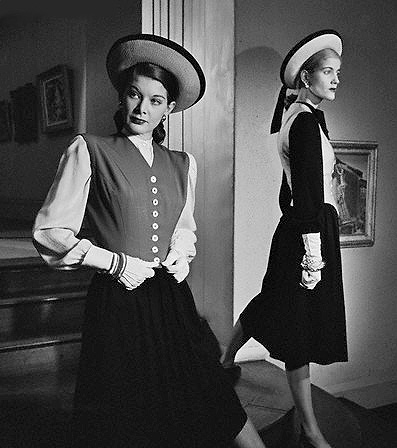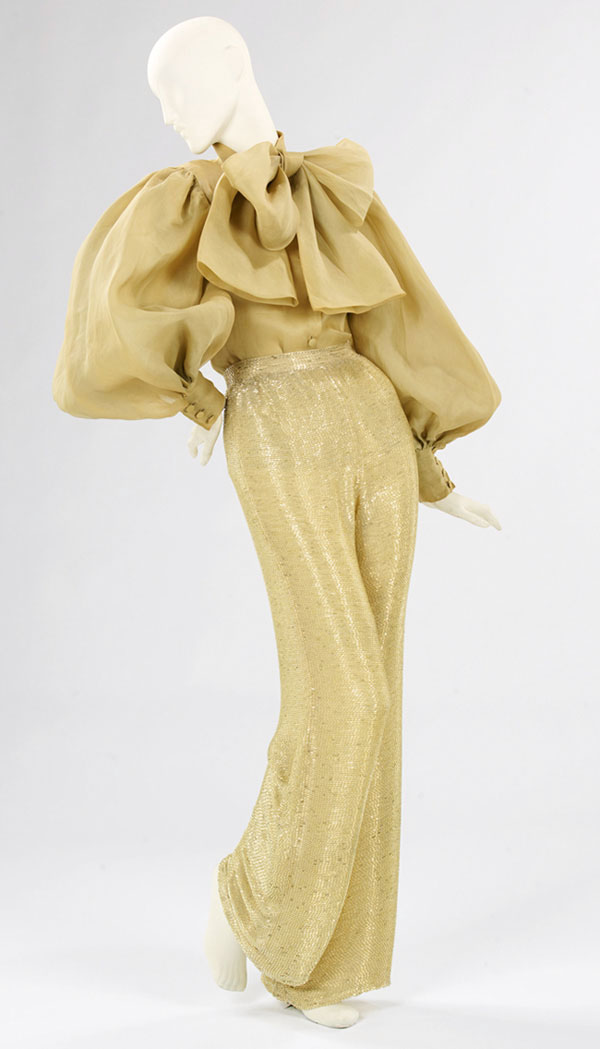Norman Norell
Norman Norell (1900-1972) American
Norman Norell was known for his tailored silhouettes, elegant suits, and sequined gowns. Today, he is considered to have been one of the foremost American fashion designers with a style consisting of sophisticated and luxurious garments executed in a relaxed manner. After spending some time in military school during World War I, Norell studied illustration at Parsons School of Design and fashion design at Pratt Institute from 1920 to 1922. Born Norman Levinson, Norell changed his surname while at Pratt. He described his name change as, “ ‘Nor’ for Norman, ‘l’ for Levinson, with another ‘l’ added for looks.”
After graduation, he joined the East coast studios of Paramount Pictures and after a year went on to work for the Brooks Costume Company and for wholesale dress manufacturer Charles Armour. In 1928, like fellow designers McCardell and Cashin, he was hired by Hattie Carnegie, where he stayed until 1941.
At this time, businessman Anthony Traina approached Norell with a business proposal. Traina offered him a large salary if when he joined the company name did not have to change; however, Norell insisted and accepted a lower salary in exchange for the company name of Traina-Norrell.
One of his daytime to evening looks was the “subway coat”, a classic and inconspicuous wool coat that inside was lined with opulent sequins and worn with a matching sequined dress. In short, this ensemble was safe to wear on the subway as long as you kept the coat closed. Another of his daytime looks was a sleeveless jacket worn over a bow-tied blouse and slim skirt. That idea came to him because of the sleeveless vest that he wore over his own clothes when working.
The strength of Norell clothes was in their simplicity. They brought desired attention to the wearer as opposed to the clothes alone. Regular trips to Paris exposed him to the couture standards that made French clothes the best of high fashion and Norell had the ability to translate those aspects and techniques into American ready-to-wear.
For evening, Norell looked to the flashy glamour of his early days designing costumes for vaudeville. A lavish use of sequins became Norell’s signature “mermaid” formfitting sheath gowns. These sequin covered gowns, available in many colors and configurations, quickly became American fashion classics. In my opinion, almost any of these gowns could be worn today.
In 1960, Norell started his own label, Norman Norell Ltd. Unlike couture designers, who only produce a garment for a specific person, Norell applied his high-standards to mass produced garments. Even though his clothes were ready-to-wear, each Norell garment was handled from start-to-finish by the same worker.
Recently, Norell’s name was in the news when Michelle Obama, the First Lady chose to wear a vintage 1950s Norell to the 2010 “Christmas In Washington” concert.
Hollywood connection: In 1922, he joined the Astoria, NY studios of Paramount Pictures in Long Island where he designed clothes for Gloria Swanson, Rudolph Valentino, and other silent screen stars. He was only there for one year. However; in later years, he would create clothes for such motion pictures as That Touch of Mink (1962) and Klute (1971).
His style, innovations, and lasting influence on fashion:
- His famous “Mermaid” gowns were produced in sumptuous pastel and jewel colors in different lengths with various sleeve treatments. The dresses remain classic and beautiful in their simplicity.
- During his career, he worked as a costume designer on Broadway, making the costumes for the Ziegfeld Follies and the Cotton Club.
- In 1943, Norell received the first-ever Coty American Fashion Critics Award and was also the first designer inducted into the Coty Award Hall of Fame in 1956.
- In 1968, he created and marketed “Norell”, the first Revlon fragrance named after an American fashion designer.
- The Metropolitan Museum of Art held a Norman Norell retrospective in 1972.
Sources: Who’s Who in Fashion (2008) Anne Stegemeyer; Contemporary Fashion (1995) Therese Duzinkiewicz Baker

 Sign In
Sign In











Comments
Stephanie
April 13, 2011 #
I love the idea of having a secret glamorous outfit under a rather plain coat. How fun is that!
Patty
April 13, 2011 #
His stuff has such a timeless look to it – had I just seen the photos, I wouldn’t have been surprised had these been current fashions!
And that subway coat concept is so fun! But the idea of sequins against sequins – ewwwww….
Laura
April 13, 2011 #
So classic! I love that my favorite pieces are somehow both tailored and slinky. Obviously some of Michael Kors aesthetic is influenced by Norell.
knitlit kate
April 14, 2011 #
what a lovely blog you have here. great post on the fab, fab norell! the coats are esp amazing. thanks for sharing.
fangaroni
April 19, 2011 #
brilliant! thanks for introducing me to this designer… i am in love with the idea of the Subway coat!
Photographer
January 21, 2012 #
I see you have many photos on your blog that have been borrowed from various vintage clothing sites, auction houses, and museums. Please note that is appropriate to credit the source/owner of the image when borrowing someone else’s photography to illustrate your blog.
Daniella
April 26, 2013 #
You have got the best designs.